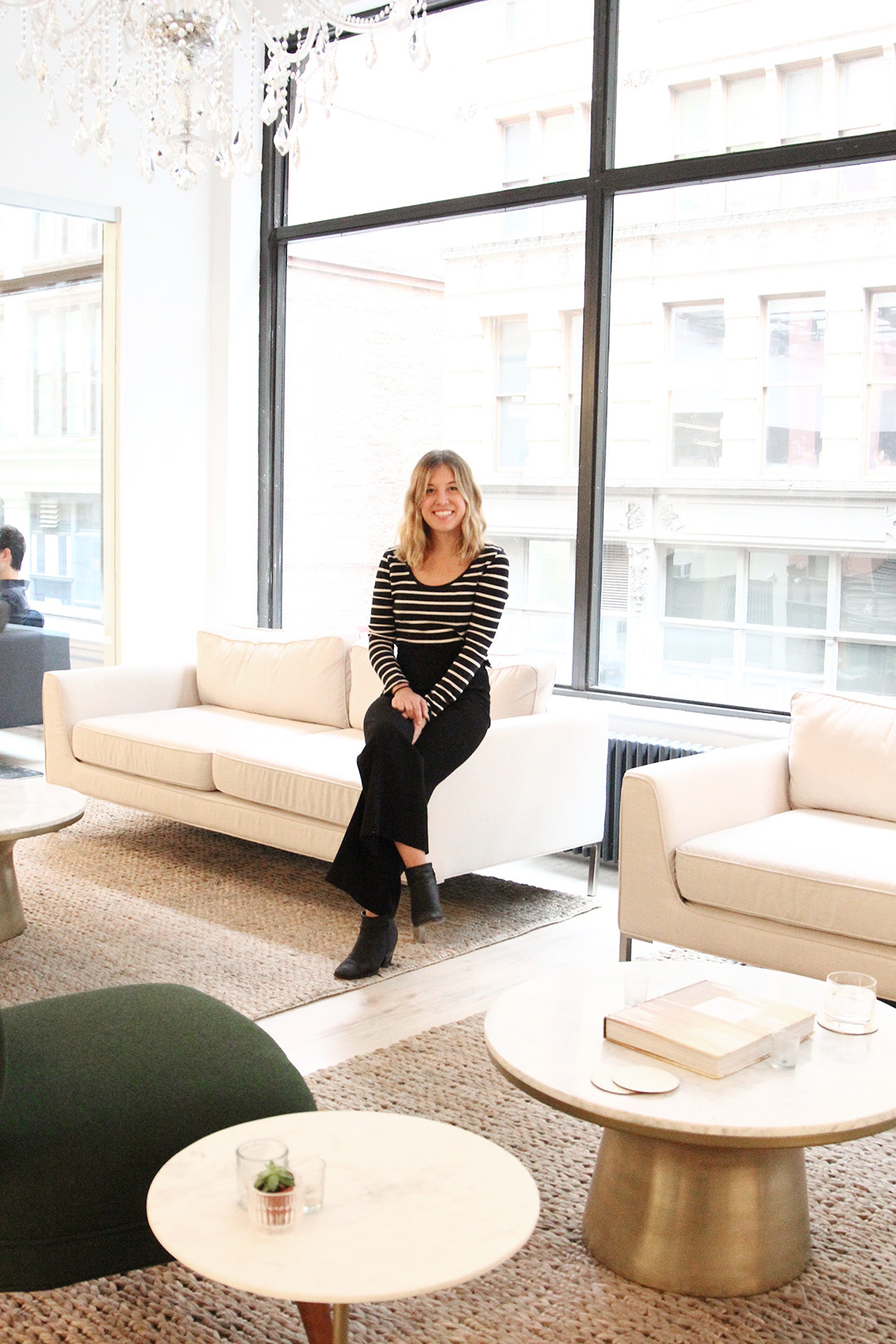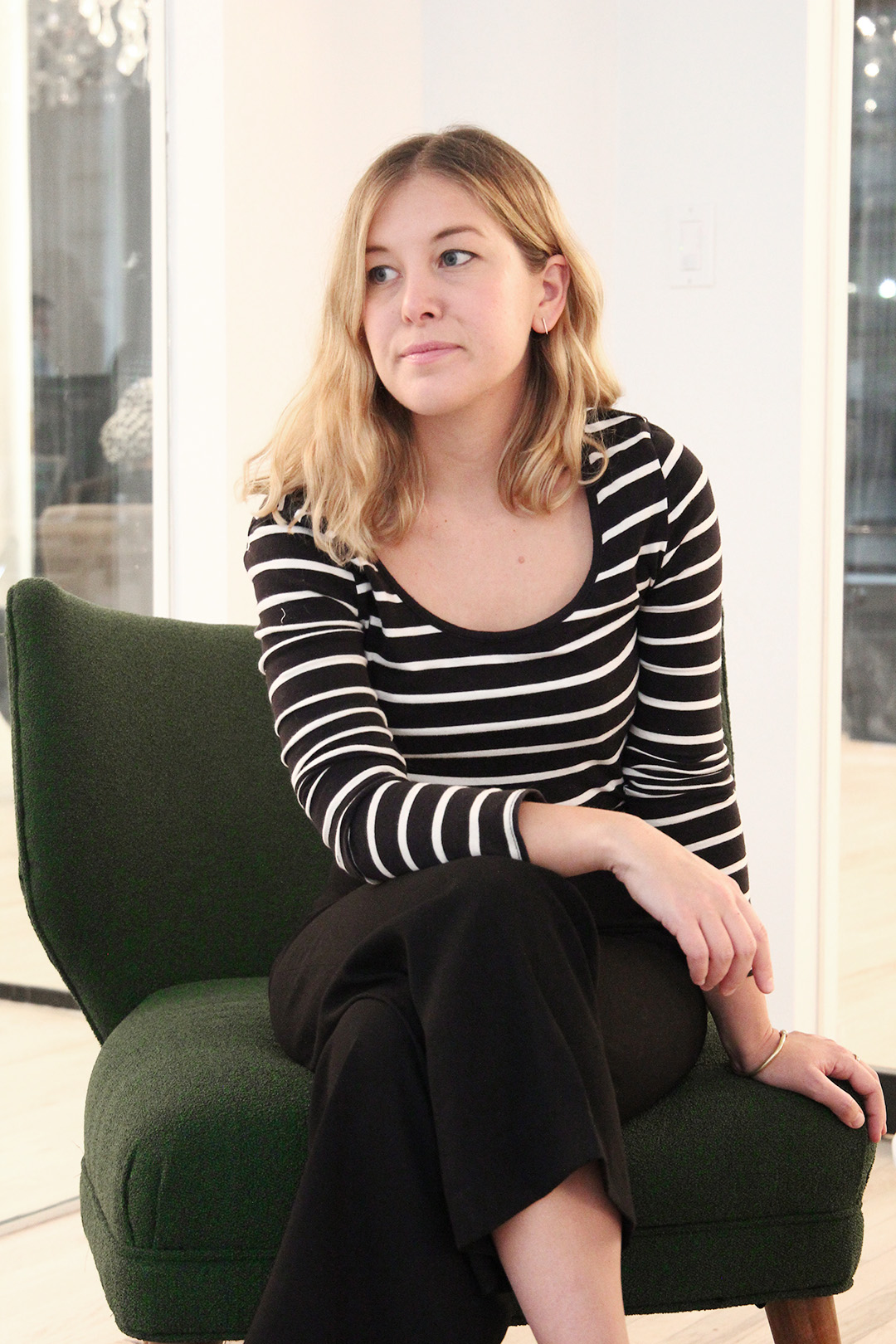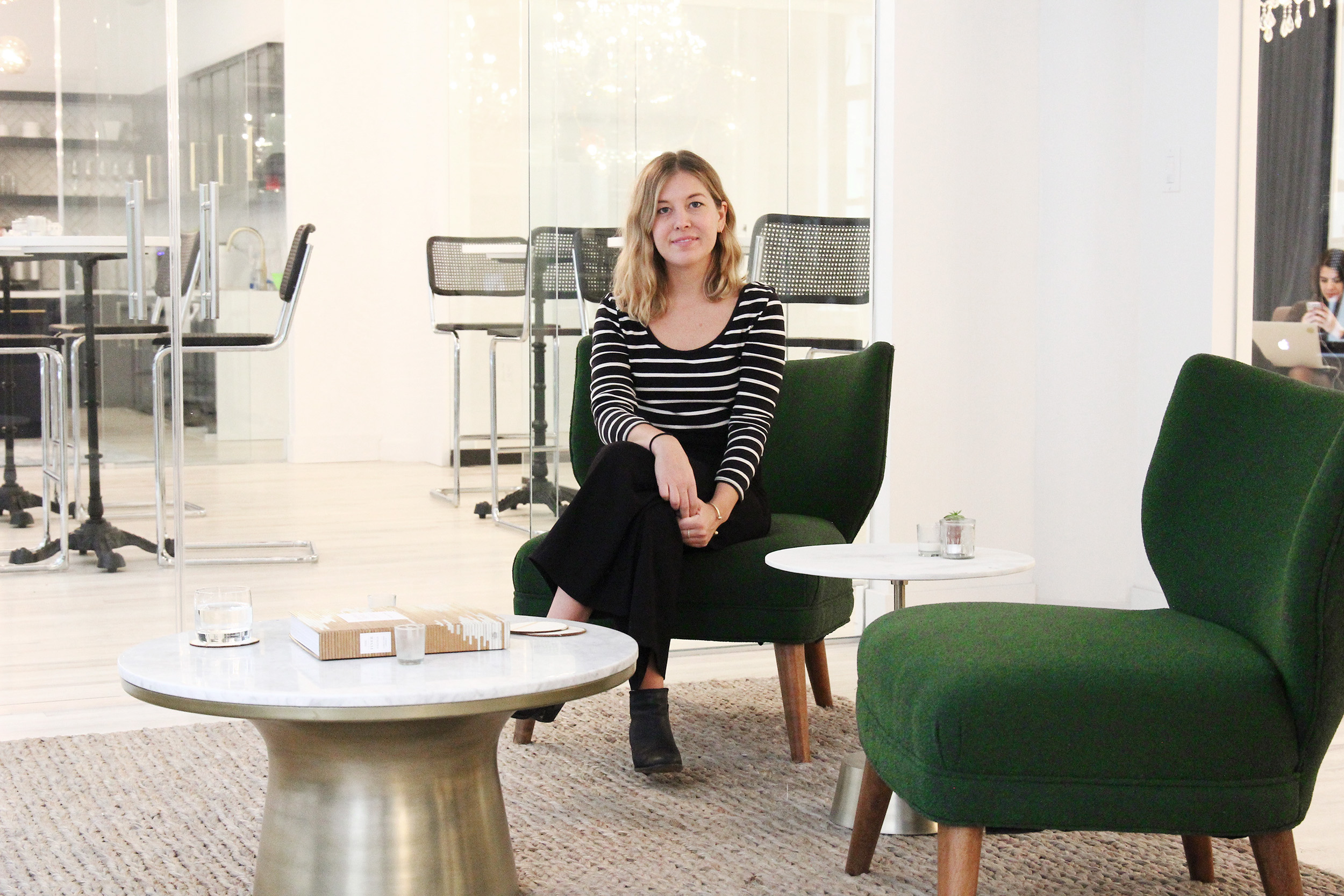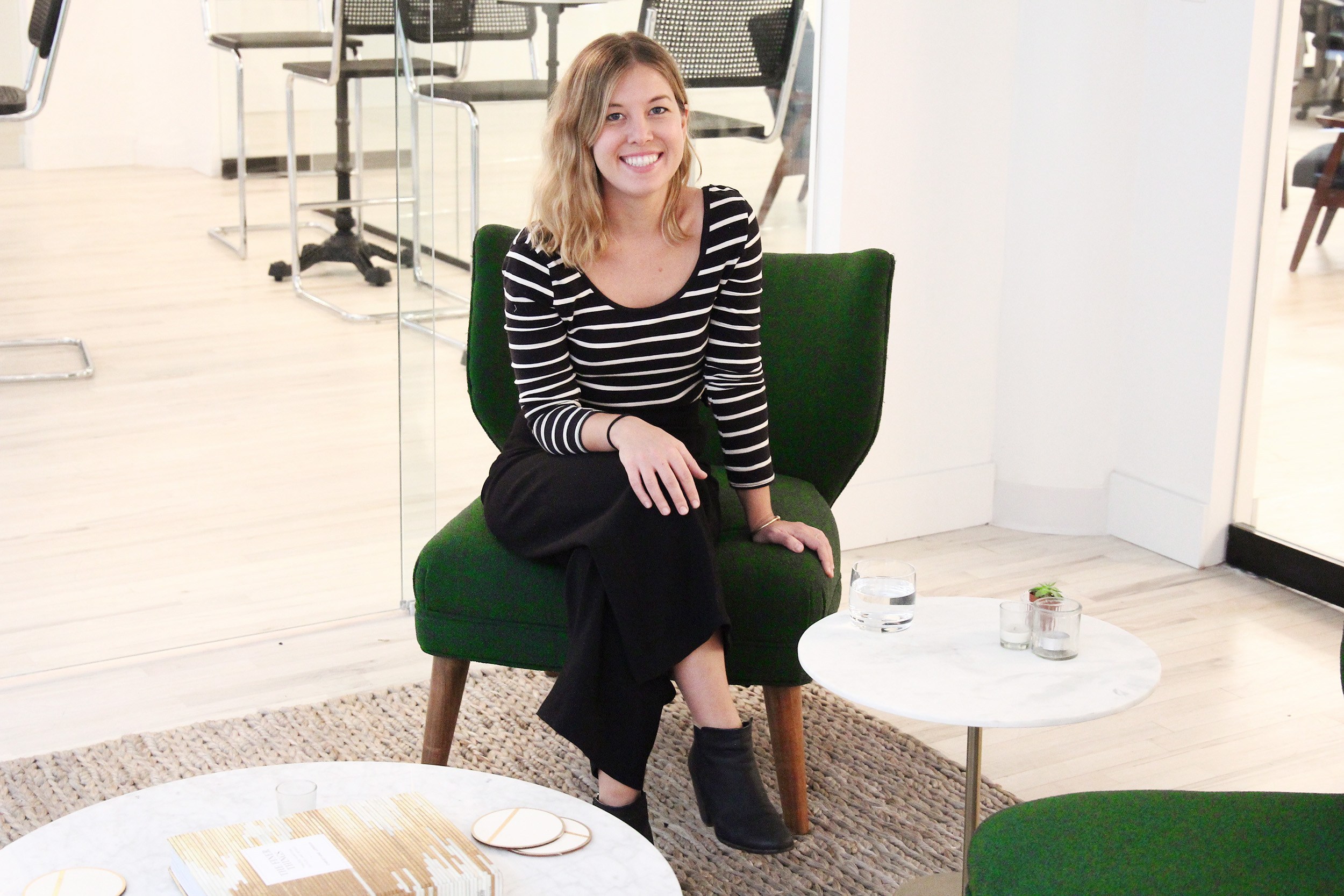Let’s get real for a second: how many of you would leave the security of a great position at an industry leader to join a bootstrapped start-up? If we’re being truly honest with ourselves, I think it’s safe to say that the vast majority of us would choose comfort, even when posed with an opportunity to grow, expand and venture into exciting new territories. That’s partly what makes Lisa Bubbers’ career so interesting.
She was responsible for everything from business development to licencing and partnerships at Jonathan Adler before handing in her notice and taking a leap of faith on what was then a relatively unknown interior design service. The rest, as they say is history. Since joining the Homepolish team as Director of Marketing three years ago, the company has raised $20 million in funding led by Andy Hunt of Warby Parker; clients have included everyone from Goop, Leanda Medine and Dannijo designer Danielle Snyder; and the team recently moved into an air-filled 12,000 square-foot office in the Flatiron District in New York. In a nutshell, the company offers interior designers by the hour in a bid to make the whole process of decorating more accessible and affordable – and their handiwork just so happens to pop up in almost every other home we’ve photographed in the city.
Naturally, when we were given the opportunity to pick her brains on everything from the opportunities and challenges of building a start-up from the ground up (she was the sixth employee) and the ways she’s created and nurtured relationships along the way (hint: it involves coffees, and lots of them) to the ins and outs of creating campaigns, growing a team and keeping on brand, we couldn’t say no. Her straight to the point career advice is pure gold.
 ON HER EARLY ASPIRATIONS: My parents are both doctors and my sister is a surgeon! Our publications were mostly scientific. I’m definitely the black sheep. But I did go to a very creative liberal arts high school and I was encouraged from a young age to explore my passions. I didn’t grow up in a creative home at all but I’ve always loved art and design, and knew I wanted a career that spoke to that passion. Originally I thought I’d be the practitioner, and applied to grad school at Pratt for Interior Architecture, and worked at a boutique architecture firm as the marketer and writer while I waited to see if I got in. It was an eye-opening experience, and I learned that while my interests are in art and design, my skills and talents are better suited to marketing, partnerships and branding, and ultimately didn’t go to Pratt after I was accepted.
ON HER EARLY ASPIRATIONS: My parents are both doctors and my sister is a surgeon! Our publications were mostly scientific. I’m definitely the black sheep. But I did go to a very creative liberal arts high school and I was encouraged from a young age to explore my passions. I didn’t grow up in a creative home at all but I’ve always loved art and design, and knew I wanted a career that spoke to that passion. Originally I thought I’d be the practitioner, and applied to grad school at Pratt for Interior Architecture, and worked at a boutique architecture firm as the marketer and writer while I waited to see if I got in. It was an eye-opening experience, and I learned that while my interests are in art and design, my skills and talents are better suited to marketing, partnerships and branding, and ultimately didn’t go to Pratt after I was accepted.
WORKING UP FROM ASSISTANT TO PROJECT MANAGER AT JONATHAN ADLER: What originally attracted me to the to the business was Jonathan himself. He’s a creative genius and I loved that he had grown into a design celebrity and built a lifestyle brand from humble beginnings as a potter. It was interesting timing for me too. At age 25 I had taken a six-month break from NYC to backpack around South America at the same time as the recession. When I got back it was impossible to find a job. I knew I had to take a step back career wise and be an assistant again to get in at the right company, but I was careful to choose someone that I wanted to learn from and felt that after paying my dues, I could grow within the organization.
THE BIGGEST TAKEAWAYS FROM JONATHAN ADLER: I really learned how to carefully evaluate opportunities, negotiate deals, how to collaborate with partners and the importance of follow-through. At Jonathan Adler I worked on anything that was growing the brand into new categories; so his book deals, web series, handbag licenses, collaborations like Jonathan Adler x TOMS, etc. I was fortunate to work on a number of different types of projects.
HER KNACK FOR THINKING CREATIVELY AND COMMERCIALLY: I think I’ve always been smack in the middle of left brain/right brain. I think when you’re younger things seem black or white – you’re either a creative or a professional. As you get into the working landscape you realize that a good creative needs to be able to run a business and a great business person needs to approach things creatively. I absolutely think it can be learned on the job. I felt my time at Jonathan Adler, closely assisting him and the President, was a mini business school degree.
THE POWER OF RELATIONSHIPS: I’ve been able to create and nurture them through lots of coffees! When I was looking to make my next career change I took everyone I admired to coffee to pick their brain and help me make connections to find the right opportunity. Now that I’m at Homepolish and more established, I always find time to go to coffee with women who are looking for guidance and advice. And now, as I take on more and more responsibility, I’m constantly meeting with my peers and picking their brains for industry know-how and returning the favor when asked.
 ON MAKING THE MOVE TO HOMPOLISH: When I joined Homepolish nothing like it existed. The on-demand tech-enabled services startups were becoming very popular, and there were companies making it easier for you to cook, to get a cleaner or a handyman, but no one had approached the opaque and out-out-date industry of interior design. I thought the concept of making interior design accessible to the masses was pure genius. I had a strong background in design businesses but really wanted to get into the tech startup space, so this was the perfect marriage of my skills and interests and an exciting new challenge.
ON MAKING THE MOVE TO HOMPOLISH: When I joined Homepolish nothing like it existed. The on-demand tech-enabled services startups were becoming very popular, and there were companies making it easier for you to cook, to get a cleaner or a handyman, but no one had approached the opaque and out-out-date industry of interior design. I thought the concept of making interior design accessible to the masses was pure genius. I had a strong background in design businesses but really wanted to get into the tech startup space, so this was the perfect marriage of my skills and interests and an exciting new challenge.
WHAT IT WAS LIKE BEING THE COMPANY’S SIXTH EMPLOYEE: Those early days were crazy. No two days were alike. I worked very closely with the two founders building everything on the brand and marketing side from scratch. We are all very opinionated so there was always heated discussion about the direction of the brand, our voice, our content, newsletter etc. We were bootstrapped and incredibly scrappy. But the constraints of having to be resourceful and scrappy allowed us to be very creative and innovative. We all wore many, many hats, rolled up our sleeves, dug in and got it done.
HER ROLE & HOW HER AVERAGE DAY HAS EVOLVED: Now I manage a wonderful brand marketing team consisting seven people and an agency that covers Partnerships, Press, Editorial Content, Social Content, Creative Services, Digital Advertising, SEO, Email Marketing and Analytics. My typical day now is about 4-7 hours of meetings a day working closely with the leadership team on strategy and decision making and then conveying this direction to my team and helping and supporting them to do their best work.
THE CHALLENGES WORKING AT A START-UP: I’d say both the biggest challenge and the biggest opportunity of working at start-up from inception is really pioneering your own path. There is no one mandating your workload, your days or your priorities. It is up to you to forge ahead a path and really trust your own instincts. This can feel scary and it’s an emotional rollercoaster of trial and error. But if like me, you crave autonomy and ownership of your work and want to see an immediate and large impact of your efforts, then working at an early stage startup is one of the most rewarding experiences I can imagine.
HOW SHE APPROACHES CAMPAIGNS: In the beginning, it wasn’t easy to predict, which activations would work. We didn’t have the tools or the years of data to help us make those decisions. A lot of it is just learning from past partnerships, iterating and trusting your gut on what is good for the brand and what your target demo will like. Four years later, we are definitely using data a lot more to make decisions.
ON KEEPING THEIR MESSAGE CONSISTENT: I work closely with our incredible art director and we’re very aligned on our brand voice, look and feel. Together we ensure the site, the marketing materials, the content and all brand touchpoints fit within our brand persona. The best way to ensure this is to make sure the brand persona is absorbed, lived and breathed through the company culture so everyone executing anything from a tweet to a newsletter is on the same page.
 HER APPROACH TO HIRING: I’ve found that some people at big companies are really looking to escape the feeling of being a cog in a machine and go somewhere where they can see the impact of their work. I think if the motivation is there, people from big companies can bring a lot of great experience and systems to a more loose startup environment. On the other hand, I don’t believe that just because you’ve done the job somewhere else, applying the same practices to a different company will yield the same results. I’m always looking for strategic, critical and creative thinkers that will think through what will work for Homepolish.
HER APPROACH TO HIRING: I’ve found that some people at big companies are really looking to escape the feeling of being a cog in a machine and go somewhere where they can see the impact of their work. I think if the motivation is there, people from big companies can bring a lot of great experience and systems to a more loose startup environment. On the other hand, I don’t believe that just because you’ve done the job somewhere else, applying the same practices to a different company will yield the same results. I’m always looking for strategic, critical and creative thinkers that will think through what will work for Homepolish.
REMAINING INFORMED: I definitely thrive under pressure. I’ve never loved rules or following in the footsteps of someone else, and I feel freest when I can pioneer my own course. And I am constantly learning, daily. I’m always pushing myself to read articles about new technology and the industry at large to stay in the know. It’s a Sisyphean task as the world of digital technology is overwhelmingly huge and changing at a breakneck speed, but it means that you’re always being challenged to adapt.
ON OVERCOMING FAILURES AND MOMENTS OF SELF-DOUBT: I strongly believe in the ‘fake it ‘til you make it’ philosophy. The wonderful thing about tech startup culture is that everything is new, and everyone is figuring it out for the first time together. I think our founder, Noa has really cultivated an environment where mistakes and failures are ok and part of the process. We always start small so that we can fail small, learn from our mistakes, iterate and then go big. It’s a constant learning process.
MANAGING BURN OUT: I try to maintain a healthy work life balance, but the truth is working this intensely does take its toll. The best way for me to check out and re-boot is by going on vacation. We have a great culture of a take-what-you-need vacation policy, and I try every couple of months to unplug for at least a long weekend.
DON’T STAY AT A JOB JUST FOR YOUR RESUME: The rule of thumb is that you should stay at a new job for a year and that you shouldn’t leave a job without having another one lined up. While I do think large holes on resumes can raise red flags to prospective employers, a greater value in a potential hire is someone that has good instincts and listens to their gut. If you hate your current situation, take the risk to find a better alternative no matter how the optics may seem. Your happiness and personal growth is far more valuable than having a job for a full year before leaving.


